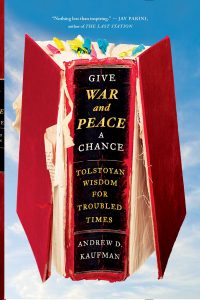Here’s Why Creativity is More Important Than Ever
What kind of career comes to mind when you think of creativity? Maybe acting, writing, or filmmaking? In the past, these have been described as the “creative fields,” as opposed to disciplines like business, law, math, or science. You don’t hear them described that way quite as often anymore, but the implication that creativity isn’t a vital part of these other areas of study is preposterous.
What Does Creativity Involve?
Creativity involves developing new ideas and imagining different ways of collaborating with others to solve problems. Those are critical skills in any line of work. Just look at the astonishing speed at which the COVID-19 vaccines have been developed. How many lives will be saved by the creativity of the scientists who envisioned new ways to manufacture a vaccine and produce it at astonishingly fast rates?
As teachers, we should be thinking hard about how well we’re equipping the next generation of students for the world they’re about to enter.
Are we stuck in a by-the-book approach because that’s the way it’s always been done? If you walk into many college lecture halls, you rarely observe fires being kindled or new ideas being generated. What you see instead is a herd-like submission to the same status quo that defined the college classroom of a generation and two ago: a professor standing at a podium, overlooking a sea of passive students quietly jotting down what they will need to regurgitate later for a test.
Do we honestly believe that we’ll create a better society by graduating a generation of students who apply the very same technocratic, hierarchical, individualistic, competitive mindset that many of today’s leaders were indoctrinated in a generation ago?
We can do better, and we should be having this conversation in all fields. We want our students to have the critical thinking skills necessary to adapt to whatever problems arise down the road — and the creativity to come up with a solution.
Opportunities For Creativity
In my course, Books Behind Bars, I structure the class in a way that students have no choice but to be innovative. I give my University of Virginia students lots of autonomy to come up with their own ways of facilitating the discussions they have with small groups of incarcerated youth.
Instead of providing them with a curriculum to follow or a list of questions to ask, I invite the UVa students and their partners to come up with these on their own. This, in turn, gives them the opportunity to resolve the many other real-world problems they will face:
- relationship-building challenges,
- communication challenges,
- group management challenges,
- and a host of other difficulties arising from working inside a prison environment.
To teach students creativity, view the classroom not as a space where a professor reports on old discoveries but as a place where new insights are co-created in real-time by students and instructors alike.
Envision a class as a journey without a clear destination. An experiment without predetermined outcomes. Empower your students to become active participants in the process. Only then will students develop the habits of creativity essential to reaching the level of consciousness required to solve today’s most intractable problems.
***
Connect with Dr. Kaufman on Amazon, Twitter, Facebook, LinkedIn, Instagram, or YouTube, and sign up for his newsletter here.
Follow Books Behind Bars on Twitter and Facebook.
Purchase Give War and Peace A Chance: Tolstoyan Wisdom For Troubled Times
Mailing List
To receive monthly articles, inspiration, and updates, including updates about Andy's new book, The Gambler Wife: A True Story of Love, Risk, and the Woman Who Saved Dostoyevsky, please fill out the form below.


Dr. Kaufman, thanks for this. And thank you for your inspiring books on Tolstoy. I’m a recently retired instructional designer (UNC Chapel HIll), I struggled in my career with the widespread belief in academia that design must start with specific, measurable behavior objectives, which almost by definition discourages creativity. It became clear to me that a more effective approach is to help students learn by facilitating projects they create themselves on relevant topics that interest them.
I think what you are doing with literature is great and that reading can be very creative in itself. Also research by people like Maryanne Wolf (UCLA) shows how reading is good for the brain.
Robert,
Thanks so much for this thoughtful and honest comment. As you rightly point out, this obsession with “measurable” results–prioritizing the final product over the product–almost always kills creativity. That’s not to say that results aren’t important, but in the creative sphere, results are best achieved by not worrying about them and focusing instead on the creative process itself. When you’re hamstrung by measurable results, you don’t take risks or experiment, which is the essence of innovation. Thank you for sharing.